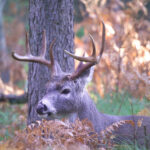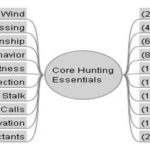Day Pack for Spot and Stalk
Most hunters under estimate the importance of having the right pack to fit their hunt. No one pack fits every hunts’ needs. So if you are like me and can’t afford to buy 5 different day packs and 5 different weekend packs it’s important to find that one pack that fits most of your needs for most of your hunting situations. Start by using your hardest day pack situation. And use this as a model to choose a pack that will be a good all around performer. For me the most demanding hunting situation on a day pack is spot and stalk situations, and mainly spot and stalk elk due to the amount of stuff you need to carry and the distances you need to cover in a day. Once you have figured out which situation requires the most pack this should often be enough pack to cover most of your other hunting situations. Then start laying out your equipment that you need to carry to be effective, safe, and not kill yourself carrying it.
My day pack for elk gear:
1) survival kit: I make my own: athletic tape, ace wrap, little packs of antiseptic, thread and needle
2) lighter and/or spark tool
3) letherman and/or small tool kit
4) zip ties and a piece of wire
5) big knife, small knife latex gloves, 30’ of 50-80lb cord, garbage bag
6) head lamp, pack light, and small led flash light
7) garmin rino 120
8) extra batteries
9) packs of hand warmers/toe warmers
10) compass , topo map, trail markers
11) toilet paper
12) Rangefinder
13) Backup release
14) Wind checker
15) Harper essentials “the ultimate survival guide” and/or falcon guide’s “wilderness first aid”
16) Extra peep sight tubing
17) Small spray bottle of scent killer cover spray
18) primos Mouth diaphragm elk call, and or hoochie mama
19) elk bugle or my fx 3 electronic game call
20) lunch, snacks, protein bars
21) one small bottle in side the pack and a large bottle in the water bottle holder on the outside of the bag
22) slik pro gm ultra-light compact tri-pod ( depending on the terrain )
23) and I need to have room to spare where I hunt elk it’s very cold in the morning and warms up quick so I need to shed clothing and have a place to put it.
After you have figured out what you need to carry start figuring out how accessible each item has to be, this is critical in choosing a pack , you can pick a pack that has a large capacity but if items aren’t accessible you will be fumble through your pack every time you need something. I like the pack to have a lot of internal pockets and sections so I can pack my gear in a way that it is easy for me to get to everything quickly and easily. I always pack my bag the same way, so looking for an item becomes like second nature. I need something, boom it’s right there! Now that you have your spread and you’ve visualized what you need and where, write a list of your pack items. Take your list and begin shopping for a pack.
Armed with your capacity needs, begin poking through several models and brands. Once you have chosen a few candidates start looking a quality of construction: zippers, stitching, and material. Now you are down to your final choices start checking for comfort I like to go grab a bunch of heavy items off the shelves and put them in the bag for a more realistic feel: making sure the shoulder straps are comfortable, it has trim adjustments, chest straps, good back pad with stiffeners and thick padded waist belt are all good things to look for. Remember the more adjustable the pack is the more customized you can make the fit. Take your time wear awhile in the store your spending good money don’t be hasty and buy on a whim. I made those mistakes early on in my hunting career and now I have a bunch of useless packs. After years of trial and error I finally figured out how to purchase packs. And with this knowledge i found a pack that best fits most of my day pack hunting needs.
My day pack of choice is Blacks Creek: All American daypack . But don’t take my word for it go find a pack that works best for you.











Leave a Reply